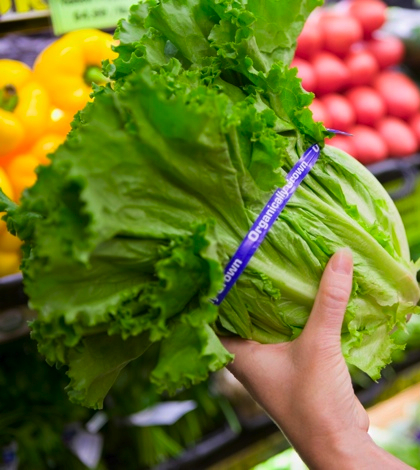The chain is downsizing, having undergone a bankruptcy filing and an ownership, change, but it’s not giving up on the western U.S. market. Despite its mistakes, Fresh & Easy could still become a player in the hyper-competitive California grocery store industry, according to several analysts.
Yes, Fresh & Easy is closing 50 stores in California, Arizona and Nevada, including eight in Riverside and San Bernardino counties.
That will bring the chain’s stores in those three states from more than 160 to 110, a major downsizing that company officials announced March 23.
At the moment, things could not look worse for the beleaguered grocery store chain, which has struggled to find a niche in the hyper-competitive Southern California grocery market.
Fresh & Easy made a big media splash when it arrived in the western United States. It’s first U.S. store opened in October 2007 in Hemet.
However, while the chain was garnering much positive media coverage for being the new player in town, some grocery analysts expressed skepticism about the new chain.
They wondered if Tesco, the retail giant from the United Kingdom that started Fresh & Easy, was merely transporting its British retail model without having done enough homework. It wasn’t clear what niche Fresh & Easy was trying to fill or how carefully Tesco officials had assessed the U.S. grocery industry.
As it turned out, the skeptics were proven right.
During its rocky eight-year run, Fresh & Easy placed a moratorium on store openings while it reassessed its market strategy and took a hit in the recession. It filed for bankruptcy in 2013 having lost close to $2 billion, according to reports.
That year, Tesco, sold the chain to Yucaipa Cos., the Los Angeles-based corporation owned by billionaire grocery store magnate Ron Burkle. Since that purchase Yucaipa Cos. has made major changes to the Fresh & Easy format, including longer store hours, introducing Wild Oats natural and organic foods to its shelves and eliminating coupons.
All in all, not a good track record for the chain that Tesco – whose market dominance in the UK has been compared to Walmart’s in the U.S. – was counting on to help it establish a market presence in the United States.
Despite all that, don’t count Fresh & Easy out yet, say some local officials who are familiar with the local grocery industry. Yes, the chain made serious mistakes and has a lot of ground to make up, and it’s surrendering some prime locations with the closings it announced last week.
However, it also has more than 100 stores still standing in the three-state market, and it has built name recognition during the past eight years.
“In no way are we giving up on the Southern California market, or the Inland Empire,” said Brendan Wonnacott, spokesman for Fresh & Easy. “We’re working on a new approach, but the mission will remain the same.”
One change being considered is smaller stores, down to 3,000 to 5,000 square feet, about half the size of the company’s current locations.
Wonnacott, who said Fresh & Easy will keep its 800,000-square-foot warehouse-distribution operation in at the former March Air Force Base in Riverside Count, declined to speculate on why the store’s move into the U.S. market was so difficult.
“That’s a hard question to answer,” Wonnacott said. “The goal was to provide items at Fresh & Easy that you couldn’t buy anywhere else, and that’s still the goal.”
To make a comeback, Fresh & Easy must assess where it went wrong and draw lessons from those mistakes, said Brad Umansky, president and part-owner of Progressive Real Estate Partners in Rancho Cucamonga.
“I think they tried to be everything to everyone instead of going after a specific demographic,” said Umansky, a retail specialist who worked with Fresh & Easy when it first entered the Inland Empire. “There were also problems with some of the sites they selected. “From a parking perspective, they weren’t very good.”
Umansky also questioned Fresh & Easy’s product mix, and said its practice of automated checkout only – no live cashiers – was never going to be popular with a majority of U.S, shoppers.
“I thought they had things figured out after the bankruptcy, but that turned out not to be true,” Umansky said. “I expected them to close down a few stores that were underperforming, but nothing like what they ended up doing. I was surprised that they closed so many.”
Despite those setbacks, Fresh & Easy might still be positioned well enough to succeed in the U.S., Umansky said.
“A lot of retailers have faced challenges when they entered a market and then turned things around,” Umanksy said. “With Fresh & Easy, people already know who they are, and that’s crucial in retail. They don’t have to brand themselves because they’re already a brand. There are a lot of demographics in Southern California. They need to figure out which one to go after.”
Fresh & Easy might have been a victim of bad timing when it opened its first U.S. stores, said Terrie Ellerbee, associate editor of The Shelby Report in Gainesville, Ga., which covers the grocery industry.
Smaller stores that specialize in fresh food are more popular now than they were eight years ago, Ellerbee said in an e-mail.
Also, Tesco opened Fresh & Easy just as the recession was started, when more consumers either began shopping at discount stores or chose to stay with the grocers they’d always patronized.
Still, Fresh & Easy can still be player in the local grocery industry. The economy is clearly recovering and the success of Walmart Neighborhood Markets shows the Fresh & Easy concept can work, Ellerbee said.
Burkle also has a successful history with natural and organic retailing, and that could help Fresh & Easy as it tries to reposition itself in the market, Ellerbe said.
“The stores may have more success this time around because smaller formats and fresh, convenient food have become more popular with shoppers who live in urban areas, and [with] aging consumers who don’t want to navigate a large grocery store,” Ellerbee said.
 IE Business Daily Business news for the Inland Empire.
IE Business Daily Business news for the Inland Empire.


